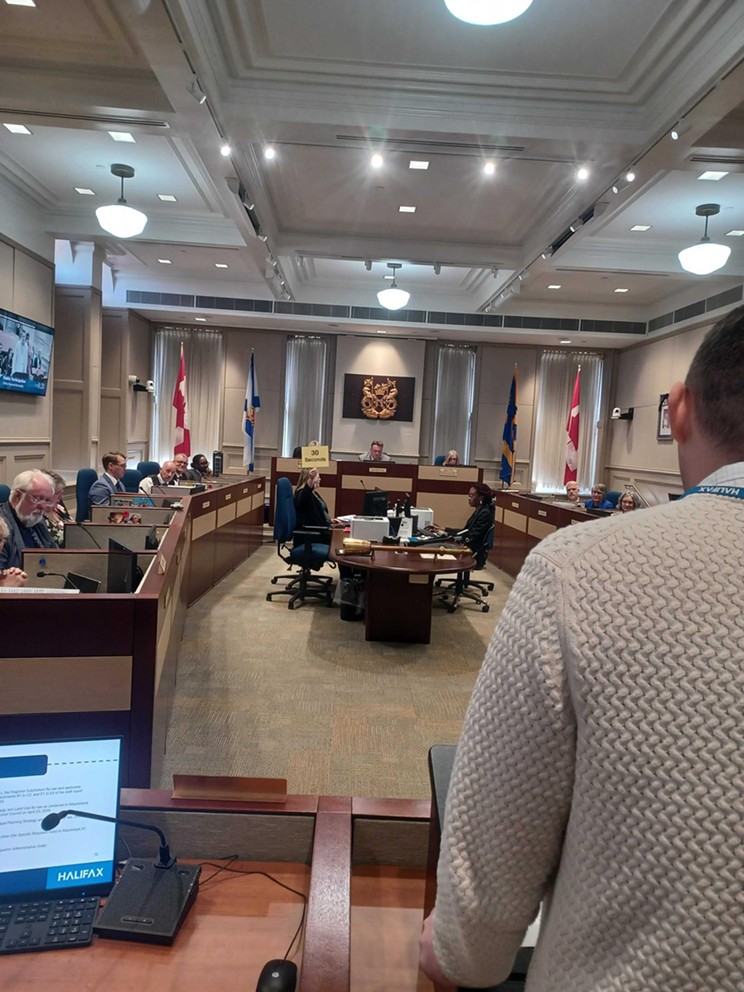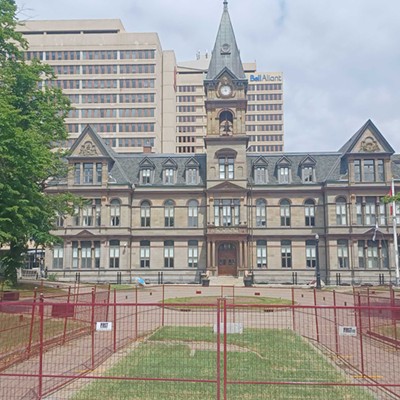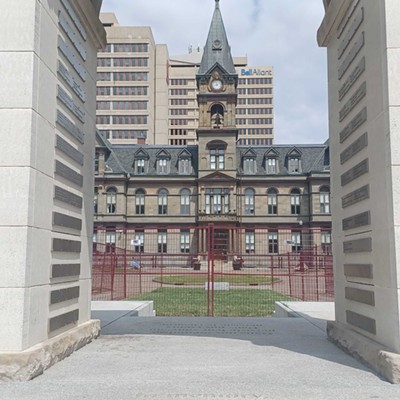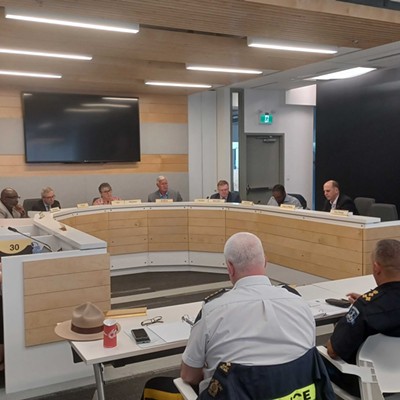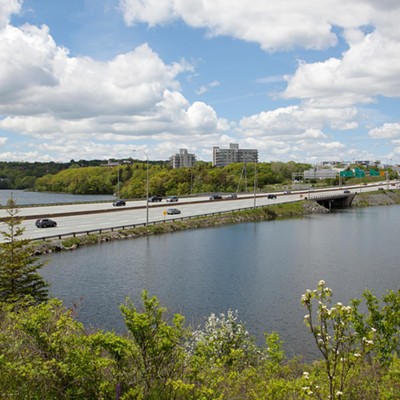These zoning changes have been in the works for a while. The federal government set up the fund in March 2023, and Halifax submitted its application for funding in June 2023. Some bureaucracy happened and then the city started doing public consultations, and as a result of concerns expressed in 170 emails, the city backed off on some proposed density around universities in April 2024. Then, also in April of this year, council gave first reading to the Housing Accelerator Fund bylaw changes and scheduled a public hearing. Then last week over a three-day meeting, Halifax’s city councillors held a public hearing before unanimously voting for the bylaw changes after a second reading in the afternoon of May 23, 2024.
Even though these changes have been explained in great detail on Halifax’s website, on the CBC, and in councillor Sam Austin’s newsletter as well as Waye Mason’s (twice), there seemed to be a lot of confusion about what these changes are and how they will impact our city.
Please click on any of the links above for a detailed explanation of these changes. But at their most basic, these changes mean that any property within the urban service boundary can now have four units. Depending on lot size and location, properties within Halifax’s urban core, AKA the Centreplan area, will now be zoned for eight units.
During the public hearing about these changes, many people, mainly landowners in the South End, opposed them. More than anything else, the opposition to these changes demonstrated that there is not a lot of public understanding about what exactly is being changed and what those changes are likely to mean for our city. From parking to bribes, it may be worth taking the time to understand what is likely to happen to our city now that councillors have voted to improve it.
A bribe to go carelessly fast?
Many speakers during the hearing seemed to think that Halifax was only passing this bylaw reform because the federal government was bribing the HRM with $79 million. This is not true, or rather, thanks to the divisions of power in Canada, spending money (or not) is how the federal government exerts power over other levels of government. For those with short memories, the feds used the threat of not giving provinces funding for healthcare to incentivize provinces to fund more mental healthcare.
On Thursday afternoon in the tail end of the debate, councillor Austin pointed out that even though the city was getting federal money, these changes are something the city was going to be doing anyways. He told his peers that this money just focused the municipal bureaucracy to prioritize these bylaw changes. And focus the bureaucracy it did! In fact, more than anything else this money showed just how dysfunctional our municipal bureaucracy has become. Even though the city has multiple strategic plans that are just as transformative or just as much of a priority as these bylaw changes, we are used to our government doing nothing, or at least nothing fast. For the low price of $79 million, Haligonians got to see the city’s work on the HAF changes, which gave a brief demonstration of what a functioning government should look like. It should be possible for a large professional organization like our municipal government to plan for and then implement a large complex plan in just under a year. They demonstrated the capability to do so with the HAF changes. So why then did it take 12 years for the city to replace bus tickets? Why will it take over 10 years for the IMP’s promised AAA bike infrastructure to be complete?
This plan won’t create affordable housing
This is likely true. Even though the city will have extra money in its density bonus fund to help non-profits create affordable housing as a result of these changes, it is fair to say that this plan is not likely to create a significant amount of affordable housing.
One of council’s favourite things to do is to pass the buck to the province and claim a lack of jurisdiction. More often than not, it is fair to say the city is blaming the provincial government as an excuse for their inaction. For example, we have super fast streets not because the province won’t post slower speed limits or won’t give the city the power to use camera enforcement (yet, this is supposed to be coming in 2026, as reported by AllNovaScotia). We have super fast streets because the HRM has used its charter power to design super fast streets.
On the housing file, whenever homelessness has come up, council has primarily used their positions of power to blame the province for inaction because building public housing, which we need, is a provincial responsibility. Not to downplay the need for affordable housing, but with a vacancy rate of 1% we also just need more housing of every type.
When it comes to housing, what the city actually has the power to change is land use and zoning. When the city first came up with the Centreplan, one of the plan’s main goals was to prevent the spawl in Halifax’s suburbs and instead focus development within the Centreplan area. At the time, in the heady days of 2016, Halifax was trying to plan for growth without increasing the city’s financial liability/vulnerability of suburban sprawl.
Since 2016 a lot has happened, mainly COVID, but it is now clear that Halifax’s initial growth predictions were way off and that has created a huge need for housing. However, due to Halifax’s regulatory structure prior to these bylaw changes, the financial incentives for development still resulted in too much suburban sprawl. For the past couple of years, councillor Pam Lovelace’s car commuter district has been growing faster than Waye Mason’s downtown district.
According to a few developers who spoke at the hearing and economist Deny Sullivan, one effect of the HAF bylaws is that they change the incentives for development. The too-simple explanation is that it should now be possible for developers to buy a house, do some renovations and then sell four units. The theory is that since renovating a house into four units is cheaper and easier than massive new developments, smaller contractors can and will enter the market. And as more people start building more homes the price of market housing should drop, like what’s happened in Austin, Texas.
In this case, even though affordable housing isn’t under municipal jurisdiction, council is finally using the power it does have to make housing more affordable.
Can our infrastructure handle density?
One of the more frustrating parts of this debate was the public’s general lack of understanding about how our city actually works. When the city was first doing the Centreplan, they wanted to find out how many people the infrastructure we have can support, so the HRM hired Stantec to do a report. As it turns out, our infrastructure within the municipal service boundary can support about 1.5 million people and if we encourage development where infrastructure already exists we could save billions of dollars a year.
Even though many people confidently stated that this proposed density would cost the city a lot of money this is just fundamentally not true. From water to roads, it costs a lot of money to provide municipal services to the residents of the HRM. When the population is dense and a lot of people are paying taxes for that infrastructure then the city is in a good financial place. But when the population is not dense, our infrastructure is a net drain on city resources.
But where people are correctly wary of our infrastructure is when it comes to transportation, specifically automotive transportation. If the city densifies without diversifying its transportation options and infrastructure, then the failures of our system, from potholes to congestion, will only become worse and more pronounced.
At the hearing, many people spoke out about the perceived need for parking, including one woman who told a story about her friend from Mahone Bay. This friend drove from Mahone Bay to the HRM to eat but couldn’t find parking. And even though the HRM is home to 200 restaurants with drive-thrus, this friend went back to Mahone Bay hungry due to a lack of parking—twice.
This phenomenon of how someone can drive to Halifax to eat and leave without finding parking has been explained by local YouTuber HFX by Bike—twice. But essentially people have a good understanding of half of this problem. If we densify and everyone in the HRM needs a car, then no, our transportation network can not handle it. But, thanks to how much space cars need and how much space is available on the peninsula, the solution to our transportation woes can’t be more cars and more parking. It needs to be a diversification of our transportation portfolio.
And here is where the infrastructure complaints from the South End landowners come in from the wilderness of fantastic thinking, become once again grounded in reality, and become valid concerns. Halifax has a plan to deal with our transportation infrastructure capacity. Many plans actually: the Integrated Mobility Plan, HalifACT, the Bus Rapid Transit plan, and the 2018 Road Safety Framework. The youngest of these plans, Bus Rapid Transit, is approaching five years old.
The only issue that will be posed to Halifax’s transportation infrastructure with increased density is the years of city council’s inaction and unwillingness to use their power to force through the sweeping changes we need for a better city. The good news from the HAF changes is that our municipal government proved that it is capable and willing to use its power. Here’s to hoping this trend extends into the realm of transportation.

